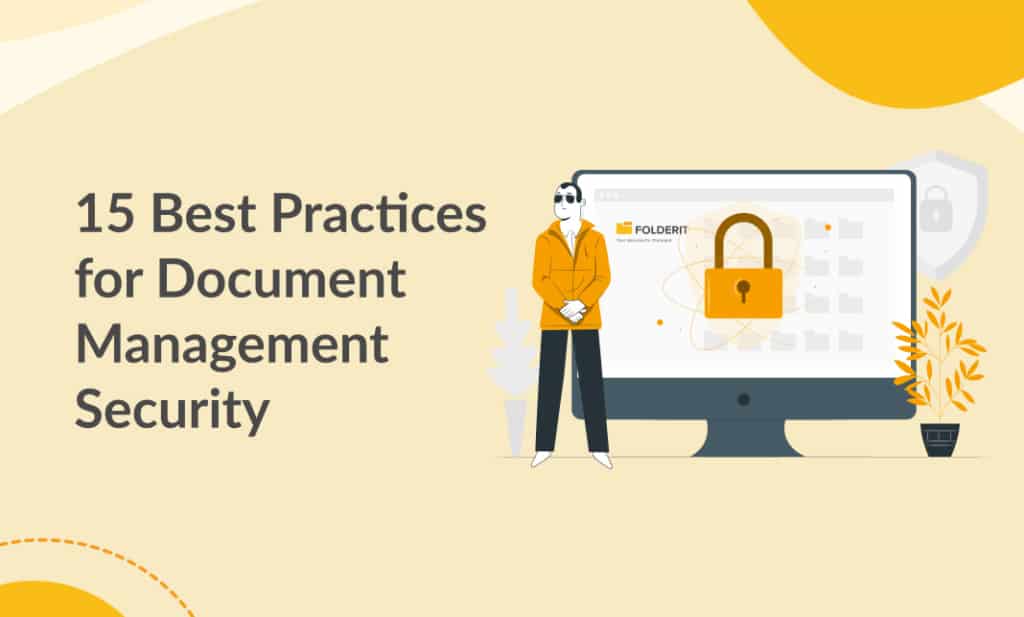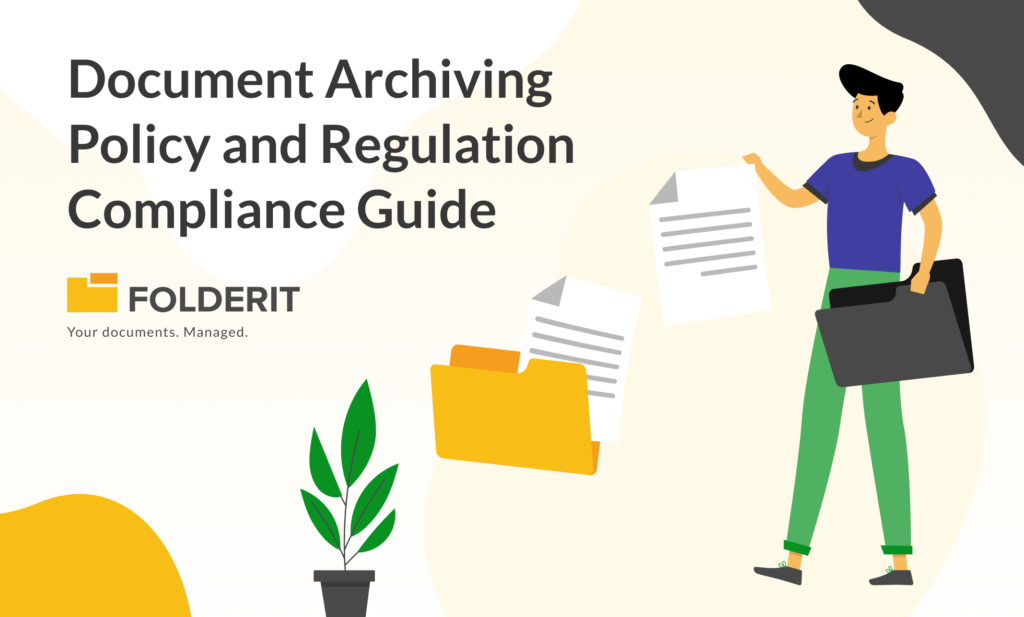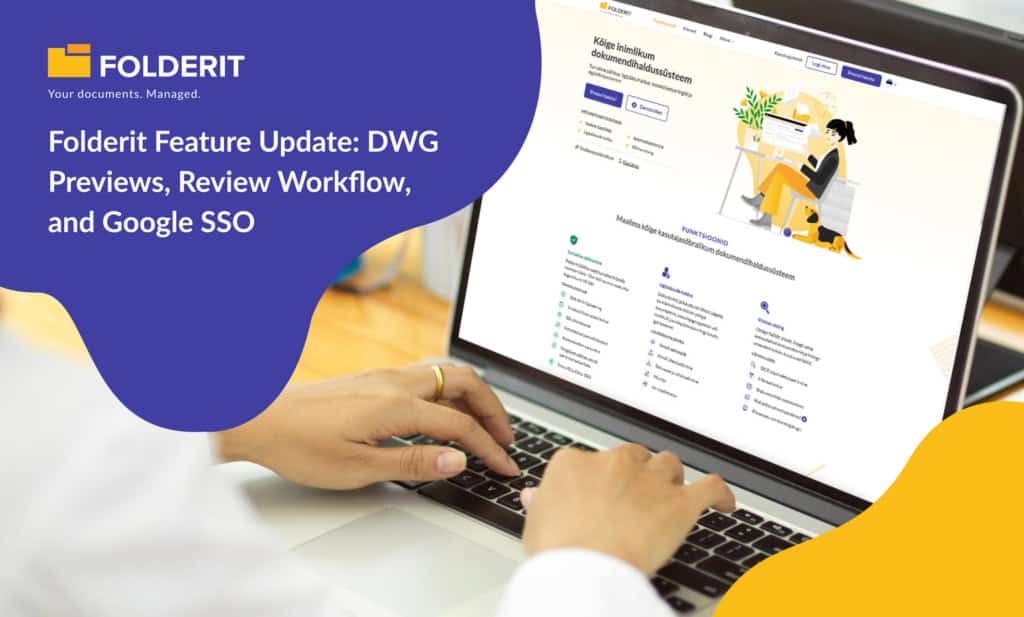Document security is essential for companies working with digital documentation. Regular documentation is necessary for efficient delivery, but sharing, transferring, and editing documents can expose organizations to security risks.
Implementing best practices for document management security, such as using a document management system (DMS) like Folderit, can significantly reduce the risk of data breaches, compliance issues, and other negative consequences. Here we explore 15 best practices for ensuring the security of your documents:
1. Strengthen access control
Establish strict policies and procedures to regulate user access to sensitive information. Monitor access and utilize authentication mechanisms to verify individual users. Regularly review and update access controls, implementing role-based access control (RBAC) to streamline the process and adjust permissions as employees change roles within the organization.
2. Implement regular backups
Choose a provider that not only regularly backs up data but also conducts checks to ensure that the necessary documents are backed up. Implement a backup schedule and store copies of your documents in multiple secure locations, including offsite and in the cloud.
3. Secure mobile networks
Treat mobile networks with extensive security measures, implement authentication protocols, and limit the documents users can access on mobile devices. Mobile device management (MDM) or enterprise mobility management (EMM) solutions can help you enforce security policies, manage devices, and protect sensitive information.
4. Encrypt storage and file transfers
Use robust encryption capabilities provided by your cloud provider or, if using a hybrid system, encrypt data when it’s stored on hardware. Ensure end-to-end encryption when sending files to customers, and employ encrypted storage solutions for sensitive documents.
5. Establish remote work security policies
Remote work offers convenience and flexibility but can expose organizations to attacks if unprepared. Set rules for accessing documents from external networks, encrypt data transfers, and educate employees on what to do if they suspect their accounts have been compromised.
6. Digitize paper documents
Converting sensitive documents to digital files adds a level of control and increases overall visibility into who accesses what. Digital documents also reduce the risks associated with physical media, such as loss, theft, or improper circulation.
7. Utilize version control
Employ a version control system to keep track of document edits and avoid confusion. This allows you to view who accessed a document, made changes, and revert to previous versions if needed.
8. Standardize documentation processes
Create clear templates for documenting issues, enabling easy tracking of process changes as organizations grow. This allows new technicians to quickly contribute and ensures a seamless troubleshooting process for customers.
9. Minimize email for file transfers
Email can pose significant security risks for file transfers. Instead, consider using a DMS like Folderit that allows internal and external users to securely share documents directly with relevant recipients.
10. Conduct security audits regularly
Regularly audit security procedures and protocols, replacing outdated processes with new ones as needed. This helps keep pace with changing security threats and ensures the continued safety of your documents.
11. Implement a DMS like Folderit
Folderit is a DMS that provides a centralized storage location, access control for documents, password management, workflow mapping, and other critical capabilities. It simplifies document management while enhancing security, collaboration, and compliance.
12. Train employees on document security
Educate your employees on best practices for document security and provide regular training to reinforce these practices, ensuring that they are well-versed in the latest security protocols.
13. Implement secure document sharing
Use secure document-sharing platforms that provide end-to-end encryption, access control, and tracking features to minimize the risk of unauthorized access or tampering during document exchanges.
14. Monitor for unusual activity
Regularly monitor user activities and document access patterns for unusual or suspicious behavior. This helps detect potential security breaches or unauthorized access, allowing you to take action before significant damage occurs.
15. Keep software up-to-date
Regularly update your DMS, operating systems, and other software to ensure you have the latest security patches and features in place. This helps protect your documents from newly discovered vulnerabilities and potential attacks.
–
Implementing these 15 best practices for document management security can significantly reduce the risk of data breaches, compliance issues, and other negative consequences. Utilizing a document management system like Folderit can further streamline your document management processes, improve collaboration, and enhance overall security. By being proactive and vigilant in securing your digital documentation, you can protect your organization’s sensitive information and maintain trust with your clients and partners.



